In mid-March 2024, the exhibition Hard Days Followed by Moments of Hope was inaugurated in the lobby of the Small Fortress cinema in the Terezín Memorial. The exposition presents selected objects, artworks and documents created by the inmates of the Terezín Prison in the Small Fortress between 1940 and 1945 during their clandestine cultural, social and leisure-time activities.
Bohumil Janda, one of the former prisoners, aptly described the time spent in Nazi repressive facilities in his memoirs: “The monotonous dullness, boredom and loneliness of long days in dark cramped dungeons were followed by moments so powerful and exciting that it is impossible to forget them for the rest of one´s life.” And particularly those moments became an impetus for holding this exhibition designed to highlight some lesser-known collection items of the Terezín Memorial and the personalities connected with their origin.
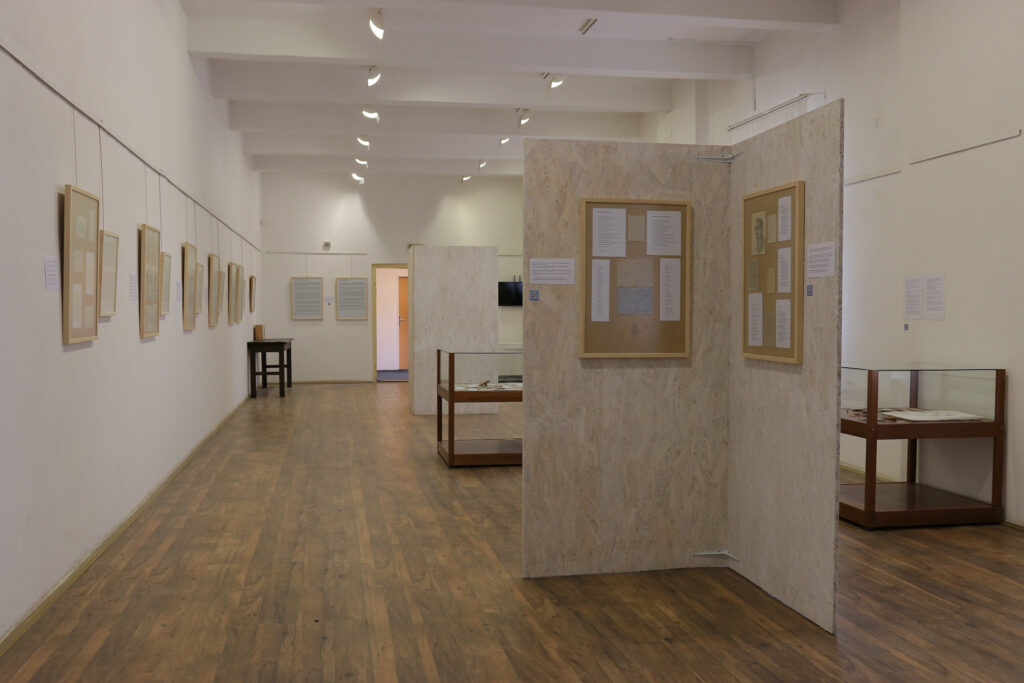
To tell us more about the exhibition, here is its author Michael Michner, an employee of the Terezín Memorial’s Departments of Collections.
Michael, could you tell us more about what we can find at the exhibition?
The exhibition features material, written and pictorial sources from the Terezín Memorial’s collection. The main exhibits are chiefly 3D objects created secretly from materials obtained by male inmates in prison workshops, or by women prisoners in the sewing workshop. These are various small artifacts, such as toys, dolls, pendants, and little hearts. We also made sure to display handmade cards, chess figures or a small cube made of bread, which the inmates used in their free time to play board games occasionally.
The exhibition is further complemented by a selection of artworks that not only document the cultural pursuits of inmates but also their everyday lives, events in the cells, and the overall atmosphere of the prison. You will also find portrait drawings and unique caricatures. However, the authors of these works were not just amateurs. In some cases they were already well-known artists, such as Karel Štipl or later, Ema Blažková.
The inclusion of such extant items as the Christmas Eve program from one cell, lecture notes, and literary works further enhances the exhibition’s comprehensive character. The most common form of expression was the writing of poems. These reflected the prisoners’ innermost feelings and expressed their longing for their families, suffering, faith, hope, and resistance to Nazism.
In conclusion, I would like to point out that we have also prepared a website for the exhibition. This will allow you to find individual parts of the installation with biographical cameos of the people associated with the exhibits.
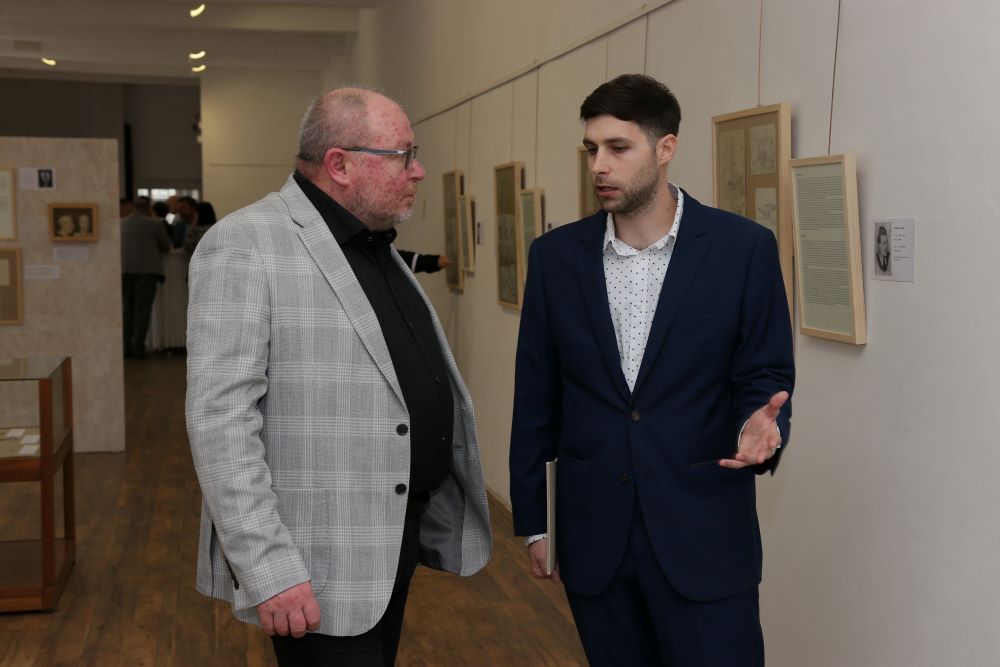
Could you describe to our readers how the selection of exhibits was made? For example, what criteria were used to determine which items were to be displayed in the exhibition?
Selecting exhibits is never simple. If you’re putting on an exhibition where the displayed objects are the main attraction, you have to set certain criteria at the beginning. In this case we focused on the aforementioned Police Prison in Terezín’s Small Fortress. This was mainly due to the fact that the Terezín Memorial had not held a similar exhibition for a long time.
The exhibition was designed and staged with one clear objective: to explore the positive impact of cultural, social and leisure-time activities prohibited to prisoners. We also wanted to present the collection items of the Terezín Memorial, which had been hidden from the public for a long time. Finally, we wanted to introduce the people associated with their creation.
A crucial moment in the decision to exhibit a collection item was, in addition to its visual appeal, undoubtedly the amount of information found, because it was only thanks to this knowledge that we were subsequently able to trace the fates of people affected by Nazi repressive facilities.
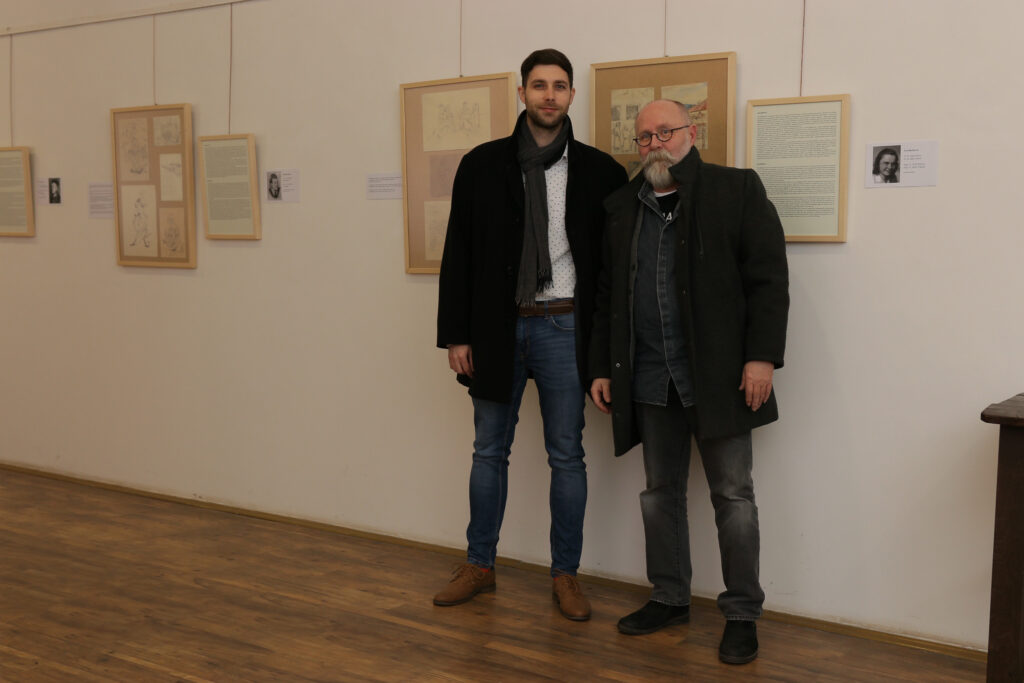
How do you actually gather information on these objects? Have you been searching for additional fragments of stories for this exhibition?
Basic information on the collection items can be found in the Terezín Memorial’s database. In addition, we also have internal documentation for the collection. This provides information on who made a particular artifact, or to whom it relates, and other data. To accurately identify prisoners, we then use a database of politically and racially persecuted persons, which is also available on the Terezín Memorial’s website.
Naturally, we conducted a thorough search for fragments of the stories, but in several instances the process proved to be quite challenging. We consulted the archives of the Terezín Memorial for recollections of the former inmates, the personal files of applicants for the issuance of certificates under Act No. 255/1946 Coll. from the Military History Archive, and, last but not least, information from relatives. Our objective was to create biographical profiles of all the individuals associated with the exhibits. We were ultimately successful in achieving this goal.
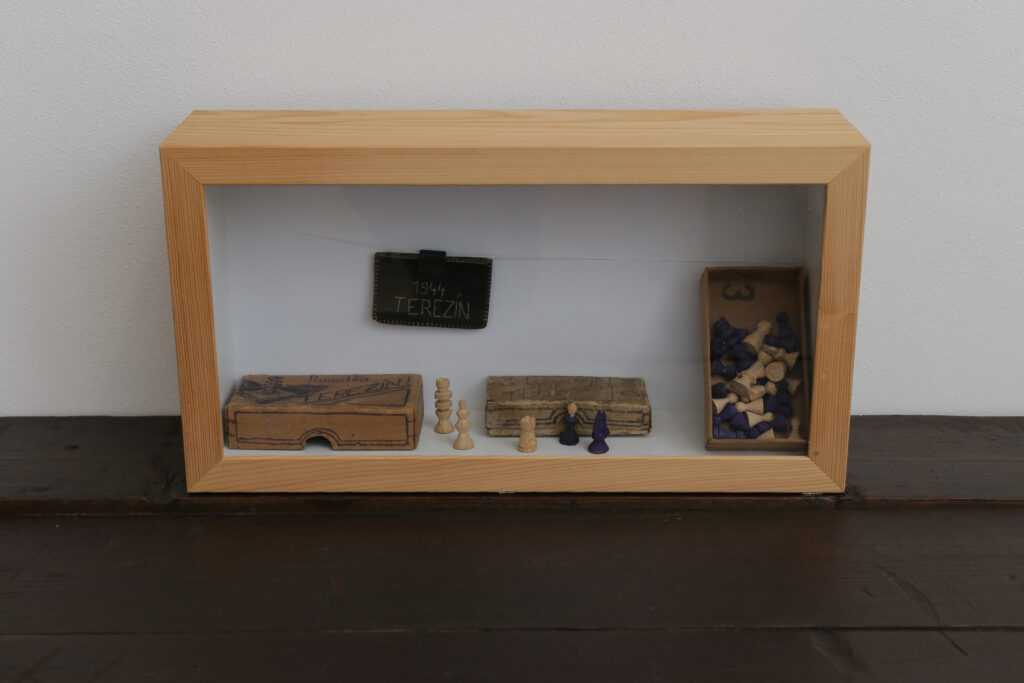
The exhibition features a wide array of 3D collection items. How many of them are kept in the Terezín Memorial’s collection?
As for the Police Prison in the Small Fortress in Terezín, we have approximately 1,000 3D objects and over 600 works of art in our collection.
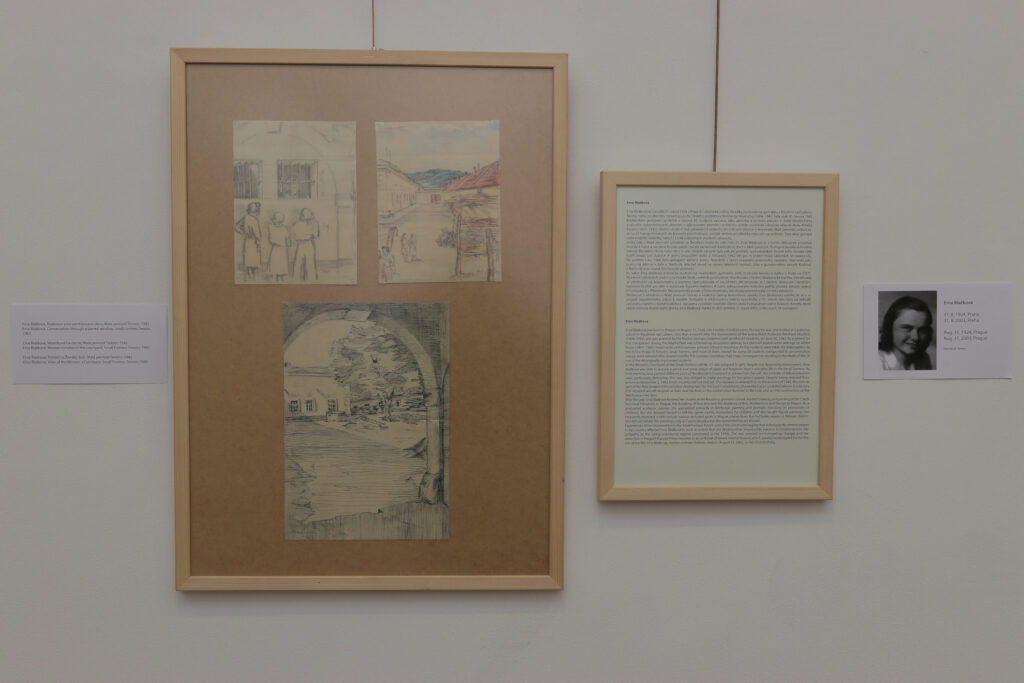
Which exhibits in particular would you like to draw visitors’ attention to and why?
Definitely worth mentioning are the two sets of chess pieces in cardboard boxes crafted by Bohuslav Fischer during his imprisonment in Terezín. They are especially interesting in that their author made about six sets of these figures. He carved them from spruce wood he had obtained from planks in cell No. 39. With the help of another prisoner, they were painted and stained in the painting workshop. Fischer kept one set and gave the others to his fellow prisoners as souvenirs. Moreover, the chess pieces are exhibited in a display case placed on the original prison table with an engraved chessboard.
We should also mention the rag doll, the rag dog, the embroidered blanket, and the cloth bookmark that Marie Svatošová made during her imprisonment in the women’s courtyard of the prison. She and her husband Josef Svatoš had provided shelter for the paratroopers from the Anthropoid and Out Distance groups in their Prague apartment. After the assassination of the Acting Reich Protector Reinhard Heydrich, they were denounced to the Gestapo. Marie and Josef Svatoš were executed on October 24, 1942 in the Mauthausen concentration camp. In this camp, the Nazis murdered 294 relatives and collaborators of the paratroopers from the ranks of Czech patriots in three waves of executions.
Thank you for the interview and let me wish you many satisfied visitors at the exhibition!
The interview with the author of the exhibition, Michael Michner, was conducted by Naděžda Seifertová
The exhibition can be seen in the lobby of the Small Fortress cinema until June 9, 2024.
If you don’t make it to the Terezín Memorial, you can view some of the exhibits on a new website of the Terezin Memorial devoted to exhibitions and art: Památník Terezín | Výstavy (pamatnik-terezin.cz).


